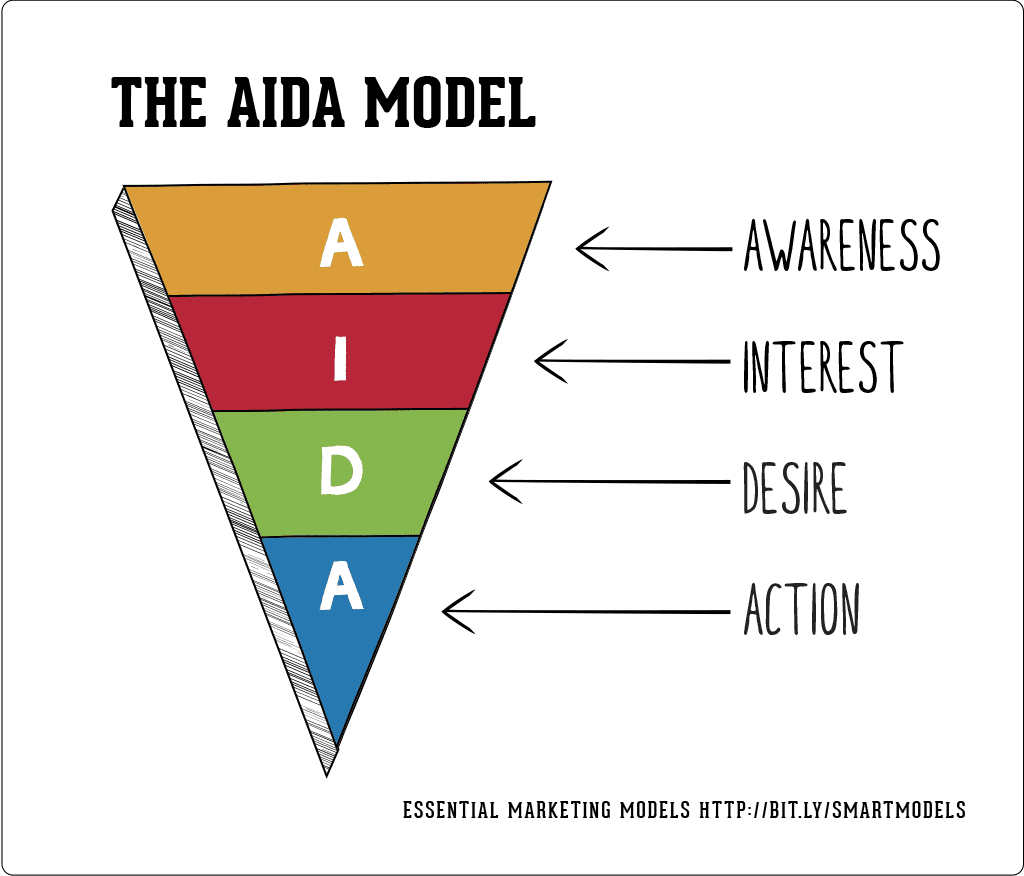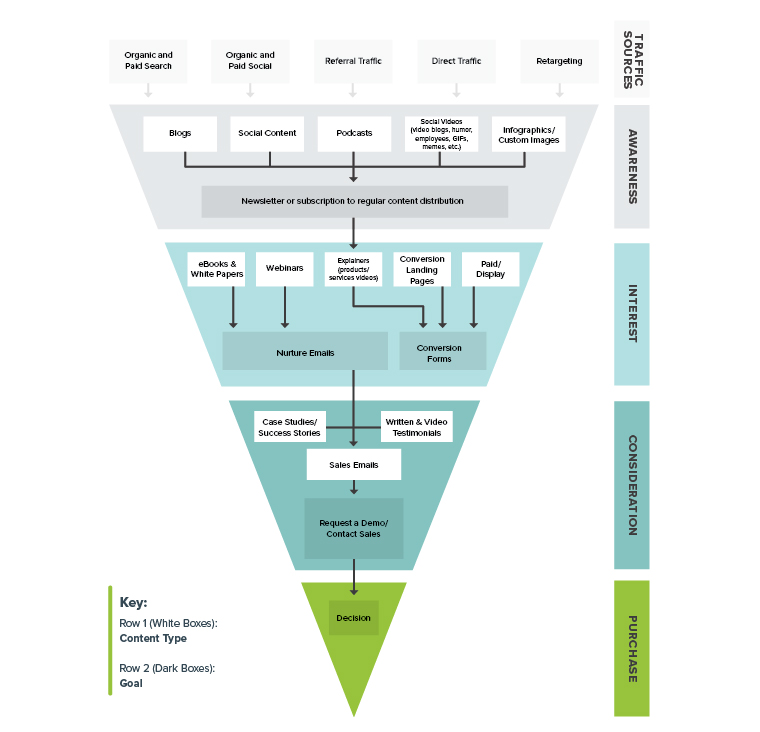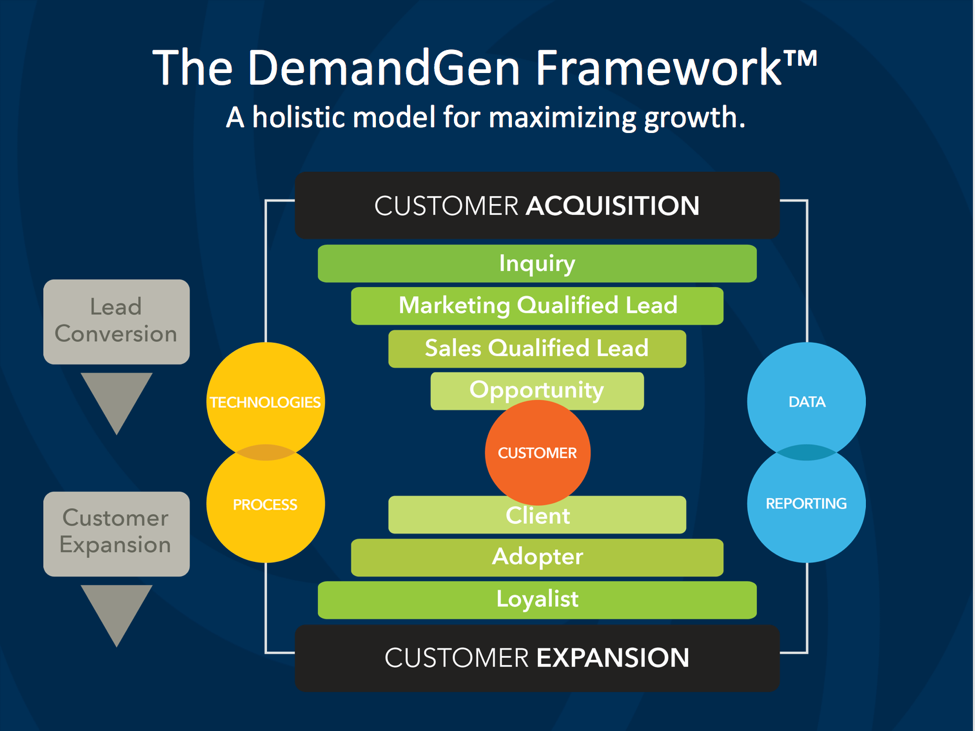Ah yes, the sales funnel.
Potential customers go in at the top and come out as loyal clients at the bottom.
Somewhere in between, they become sales qualified leads.
It’s a simple concept in theory, but does it actually work?
And more importantly, how exactly do you make one?
The best way to answer these questions is to look at sales funnel examples.
But first: What exactly is a sales funnel?
A funnel is a contraption with a wide top and a narrow base that is used to guide liquid through a small opening. Replace the liquid with potential customers, and you have the sales funnel.

The wide top is where the many potential customers pour in. The narrower middle is where they’re nurtured and further guided toward the bottom. Once they reach the bottom, they “enter the building” so to speak as qualified leads who are ready to be sold to.
You may have heard this described as a marketing funnel, a purchase funnel, a conversion funnel or even a sales pipeline. Technically, all are correct.
The goal in any conventional sales funnel is to guide leads from the top of the funnel (aka the awareness phase) to the very bottom of the funnel (aka the purchase phase).
However, some modern marketing and sales teams feel that the funnel is not entirely representative of the customer journey. Specifically, the funnel archetype doesn’t really account for what’s arguably the biggest win in business of all: Customer loyalty.
In that same vein, the funnel has also come under scrutiny for being too “linear” – leads go in, customers go out, but then what?
Consequently, some of the sales funnel examples you’ll see in this post aren’t funnels at all.
But at the end of the day, they all are meant to achieve the same goal: Turn leads into loyal customers.
With that context, let’s look at some sales funnel examples.
The AIDA sales funnel

The first sales funnel was invented by an advertiser names Elias St. Elmo Lewis in 1898.
At the time, the funnel had 4 main phases:
- Attention: A person becomes aware of a brand, product or service.
- Interest: A person becomes more interested as they learn more about benefits.
- Desire: A person starts liking the brand, product or service.
- Action: A person shows intent to become a customer (shops around, engages the brand about pricing, trials a product, etc.).
The funnel narrows toward the bottom because as you filter out bad leads, and only the most qualified potential customers pass through to the bottom.
This basic sales funnel template is still used by many companies today, and it certainly has value in any marketing strategy.
However, it has since evolved to be more specific to the nuances of digital marketing, and more specifically, content marketing.
Which brings us to another version of the sales funnel:
Brafton’s content marketing funnel (circa 2018)

The problem with the AIDA funnel is that it isn’t very descriptive or instructive.
In 2018, we created a modern version of the sales funnel that’s a little more precise and actionable.
Let’s look a little closer at each sales funnel stage:
- Traffic sources: Technically not a sales phase, we included traffic sources to visualize the paths a potential customer could take to the brand awareness phase. Search, social media, referral traffic (links from other websites), direct traffic (sharing a URL), and ad retargeting are all examples. Email marketing (not shown), is also a potential traffic source.
- Awareness: Think of this as the lead magnet phase, where you pull traffic in from the aforementioned traffic sources. Use content (blog posts, podcasts, social media content, videos) to attract your target audience and build initial awareness. Once that awareness exists, you have the opportunity to cultivate deeper interest by converting traffic into email subscribers with a well-placed call to action or subscription form. This creates a pathway to the next phase.
- Interest: This is where you develop a better understanding of what leads are interested in based on the assets and landing pages they engage with. First you need to set the bait: marketing collateral. If they fill out a form to download an eBook about a certain subject or respond to an email to sign up for a webinar, you know that they’re interested in your brand, and you even have an idea of the particular subject matter they care about. Now you can start guiding them toward the next phase.
- Consideration: This is where you officially convert leads into prospects using social proof (e.g., case studies and testimonials) and demonstrations of your product or service. Leads who have requested demos or responded favorably to the sales emails and social proof you’ve shared with them – as well as any leads who have converted on commercial landing pages (e.g., a pricing page) – are ready to be ushered into the final stage of the sales process.
- Decision: Every prospect is now a sales qualified lead that is assigned to a sales rep. At this point, you start allocating SQLs to your sales team and pitching.
Along the way, there are dozens of key metrics to pay attention to. A few of the most important KPIs by phase are:
- Awareness: Impressions (on search and social), sessions, users, conversion rate.
- Interest: Email open rates and click-through rates, form completions.
- Consideration: Direct email responses, demo or free trial requests, commercial landing page form completions.
- Decision: Allocated sales meetings, met meetings, close rate, rebuy rate.
Clearly this model is way more specific and data-driven than the original sales funnel. It also caters to both B2B and B2C markets whereas earlier sales funnel templates were more consumer-centric. Not to mention, it’s much more suitable for our modern, multi-channel digital world. (The original sales funnel predates World War I).
But even the most successful sales funnel has a flaw: It’s still a funnel. And as we pointed out early in this blog post, funnels are linear. They don’t account for the repeat customer.
This does not mean all the steps in the funnel are obsolete. They still work extraordinarily well for bringing in new business and you should absolutely be practicing every phase.
However, if we’re trying to create a model that is truly representative of sales processes, we need to think beyond the funnel.
HubSpot’s Flywheel

It’s taken some time for many marketers to warm up to the Flywheel. But the concept is undeniably elegant.
- You attract inbound traffic and turn it into leads.
- You engage those leads to turn them into customers.
- You delight those customers.
- Your delighted customers fuel momentum to generate repeat business and thereby become promoters that attract new customers.
The faster a real-life flywheel spins, the more energy it stores. The only things that cause it to slow down are friction (metaphorically, business disruption) and growth (because the bigger something gets, the more energy you need to keep it moving).
The beauty of the Flywheel is that the entire sales funnel (from lead generation to lead nurturing to sales) essentially fits into phases one and two. At the same time, the Flywheel accounts for the customer, and the value that a satisfied client can have as a brand advocate.
Case studies and testimonials are referenced in the sales funnel, but the process by which a customer turns from satisfied client into brand advocate is not well-represented.
The Flywheel model visualizes this by showing that delight feeds into attraction – where customers become promoters.
But even the mighty Flywheel is not faultless.
It leaves a lot to the imagination. HubSpot has helpfully annotated some of the specific processes involved in various sectors of the Flywheel, like so:

Still, it lacks the specificity of our sales funnel.
Some marketers have attempted to capture a little bit more detail in an hourglass-shaped sales funnel. This is sometimes referred to as the “demand generation funnel”:

Graphically, it conveys a similar growth model to that of the Flywheel, while technically leaving more space for specific instruction.
Which sales funnel should you model your marketing after?
Technically, all of them. Because all the sales funnel examples (including the Flywheel and the hourglass) you’ll find on the web have more similarities than differences.
All of them start with some form of top-level awareness that feeds into engagement, consideration, intent to buy and, eventually the decision to buy. Conceptually, inbound marketing and sales have not actually changed that much in the past century.
The only standout – and much needed – revolution to the sales funnel is the inclusion of customer loyalty and advocacy, which you’ll see in the Flywheel or the hourglass.
So if you want the most up-to-date model for inbound marketing and sales, we would have to recommend the Flywheel.
The actual graphical template doesn’t prescribe specific actions, so we also encourage you to look at the details we’ve provided in our sales funnel, and use those to guide the actions of your inbound marketing efforts leading up to the “delight” segment of the Flywheel. You can use sales pipeline software to create yours and adapt it to your necessities.
For good measure, here are some actionable steps you can take to delight existing customers and turn them into advocates:
- Create free guides, tutorials and other content that they can use to maximize the value of your products and services.
- Focus on delivering data-driven reports and KPIs that show quantifiable results of using your product or service.
- Create an email list specifically for existing clients and use it to build loyalty campaigns that encourage repeat business.
- Provide really excellent customer support.
- Ask them to partake in case studies and testimonials (it helps to remind them that any links back to their site are good for search engine optimization).
- Incentivize them to review your products and services.
Now go grease up that funnel, fill that hourglass and spin that wheel.





